DC Comics is trying something new. In the wake of their Rebirth initiative, the publisher has rapidly expanded its content to include diverse new imprints such as Young Animal, Wildstorm, Black Label, Ink, and Zoom. As their lineup expands, it can be hard to figure out what to pick up each week. That’s what the Comics Beat managing editor Alex Lu, entertainment editor Kyle Pinion, and contributor Louie Hlad are here to help you with.
THIS WEEK: Yesterday, Kyle reviewed the Action Comics: 80 Years of Superman hardcover collection, which recounts some of the greatest moments of the Man of Steel’s past. Now we look to the present in the landmark Action Comics #1000, a celebration of what Superman means to us today.
Note: the reviews below contain **spoilers**. If you want a quick, spoiler-free buy/pass recommendation on the comics in question, check out the bottom of the article for our final verdict.
 Action Comics #1000
Action Comics #1000
How do you summarize 80 years, 1000 comic book issues, and countless more stories about a single hero? It’s a herculean feat, to say the least. But here we are, at the release of Action Comics #1000, as some of the best and brightest figures in comics try to summarize what Superman means to all of us.
In a certain way, the fact that DC Comics chose to to turn Action Comics #1000 says something meaningful: Superman is not any one thing. But if you look at the stories contained within this comic, certain common threads start to emerge.
The first story, “From the City that has Everything,” categorically introduces Superman as an inspiration to us, humanity. Writer and penciller Dan Jurgens (with Norm Rapmund on inks, Hi-Fi on colors, and Rob Leigh on letters) abley tells his story about a day where the citizens of Metropolis have gathered to celebrate what Superman has done for them. A firefighter that the Man of Steel rescued when he was caught in a blaze and a criminal whom Superman provided a chance to turn his life around to are among the many who we hear testimony from. And Clark, not one to be lauded for doing what he sees as his duty, attempts to hide away from the spotlight and look towards problems that need solving until he realizes all his superheroic peers have solved these problems for him– they all believe Superman deserves a day in the sun. As a story, this is as fitting a start to our start of the Man of Steel’s celebration as we could possibly get, even if it is lighthearted fare.
Conversely though, we also get stories in this volume that showcase how humanity is as capable of inspiring Clark as he is of inspiring us. The first example of this story comes from Silver Age legends Marv Wolfman and Curt Swan (with Butch Guice and Kurt Schaffenberger on inks, Hi-Fi on colors, and Rob Leigh on letters), who bring us “An Enemy Within.” This story, about a failed attempt by Brainiac to “hack” humanity, is a little campier than what I’m typically into, but is told tightly in just a few pages and rendered gorgeously by the visual creative team.
On the whole, however, Brad Meltzer’s, John Cassaday’s, Laura Martin’s and Chris Eliopoulos’ “Faster than a Speeding Bullet” does a better job, in my opinion, in showcasing humanity’s capability of striving towards a Superman-esque ideal. I’m a big sucker for comics that showcase comics’ capacity to play with the passage of time and there are few better examples of that than this story, which takes place over the course of less than a second as a man with nothing to lose holds a gun to a hostage and starts to pull the trigger. Cassaday’s layouts take us moment by moment as the bullet enters the gun’s chamber and Superman races towards the scene. Metlzer’s fills each of these panels with captions that slow down passing frames into long moments that fill us with anticipation and dread as Superman realizes that he won’t reach the criminal and his victim in time. And then, the turn comes as Superman realizes the victim has started to lean into the gun, throwing the shooter off balance. Her bravery buys Superman just enough time to reach them, proving our innate capability to show fearlessness in the face of mortal peril. This story is a simple one, but is told flawlessly.
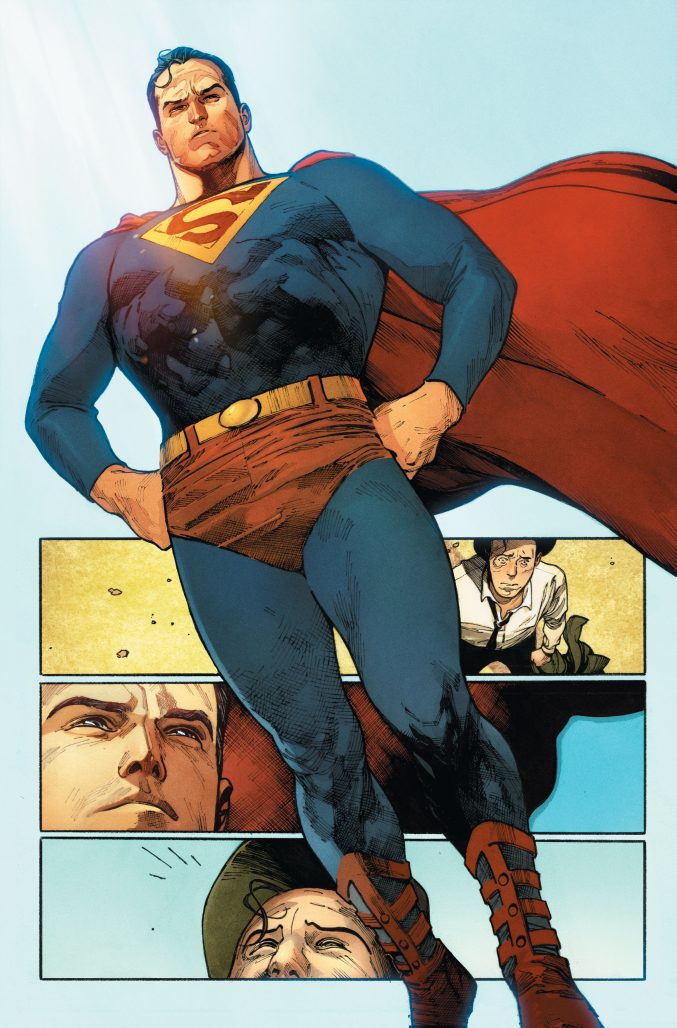
Luthor is one of my favorite villains in comics and his relationship is the focus of two stories here. In “The Game,” written by Paul Levitz, drawn by Neal Adams, colored by Hi-Fi, and lettered by Dave Sharpe, Superman and Lex sit down for a game of chess. The story summarizes their relationship relatively deftly– Luthor distrusts Superman’s alien intentions and thus acts antagonistically towards him– but misses some of the nuance that I think makes Luthor such an interesting character. Luthor is very mustache-twirly here, as he often is in the comics, but what I think makes Luthor really work is the combination of his hubris with his underlying lack of self-confidence. Luthor is a man who thought he could have everything– one of the smartest people in the world and one capable of harnessing the world’s materials to shape it, perhaps for the better, until he realized there would always be a greater power.
But where “The Game” showcases Lex as a relatively clear-cut villain, “The Fifth Season” presents him as a tragically human figure– certainly a villain, but the hero of his own story. Writer Scott Snyder, Rafael Albuquerque, colorist Dave McCaig, and letterer Tom Napolitano tell a quiet but revealing story where Lex and Superman find themselves at the Smallville Planetarium, which is showcasing the history of the universe from birth until death. Lex tells a story of a time in his childhood where he sent an SOS from Earth into space from here, searching for an answer about “why” the universe was the way it was– why it had to live and why it had to die. It’s a question that has pushed Superman and Lex Luthor throughout their lives, but their answers to it have varied greatly. Superman has looked towards the good– even though his world was destroyed and his family stripped from him, he still saw the universe’s capacity for growth and improvement. Luthor, meanwhile, became obsessed with the flaws in the system and in himself, blaming others for usurping his spotlight instead of working with others to improve the world at large. It’s a wonderful story and perhaps one of the best Snyder has written, showcasing exactly why this hero-villain dynamic is as interesting as it is.
And then there’s “The Truth,” the long awaited debut of Brian Michael Bendis on Superman. Well folks, I will say right off the bat that this is pretty exciting stuff– but then, with Jim Lee on pencils, how could it not be? The story told here is relatively simple– an alien invader known as Rogol Zaar shows up on Earth to kill Superman and Supergirl, the last victims of a Kryptonian cleansing he claims to have started by destroying Krypton. Zaar’s physicality and indeed, the action writ large here is rendered wonderfully by Lee, whose layouts are easy to follow but filled with complex detail. Inker Scott WIlliams preserves much of Lee’s rougher pencils in the fight scenes, giving the book a more violent look that is further enhanced by colorist Alex Sinclair’s liberal use of fire effects. Bendis fills every page with witty, Marvel-esque banter, including some obvious lampshading of #TheTrunksareBack, which I find hilarious. Some may chaff at this style of writing, but I think it sets a refreshing tone for Superman in the wake of previous Action Comics and Superman writers Dan Jurgens and Peter Tomasi. My one complaint is that Superman seems to take a mortal wound at the end of “The Truth” which is…quite a way to end a purported celebration of Superman.
But hey, it’s comics. The stories have to keep coming, so the death fakeouts have to keep rolling too. And the ending doesn’t take away from what Action Comics #1000 is– a powerful collection of stories (which I haven’t even discussed all of) that showcases just how prolific Superman has become in American culture. This is a landmark comic by any definition of the term, and it deserves a place on your shelf.
Verdict: Buy
 Round-Up
Round-Up
- Yeah, this week is all about Supes but Mister Miracle #8 is out as well. It’s a bit of a quieter affair this time around, focused on the day to day efforts of Barda’s and Scott’s parenting. And I think this issue is notable to me because it shows just how confident King has become in his storytelling– especially in titles that employ the nine panel grid he’s so fond of. Vision might still be a more cohesive book when all is said and done, but Mister Miracle is still shaping up, in my opinion, to be a more thematically rich story overall.
- Deathbed #3 is out this week and it’s a lot of fun. Honestly I can’t give this book enough thumbs up, thanks in no small part to Riley Rossmo’s and Ivan Plascencia’s incredible penchant for visual flair.-
Miss any of our earlier reviews? Check out our full archive!



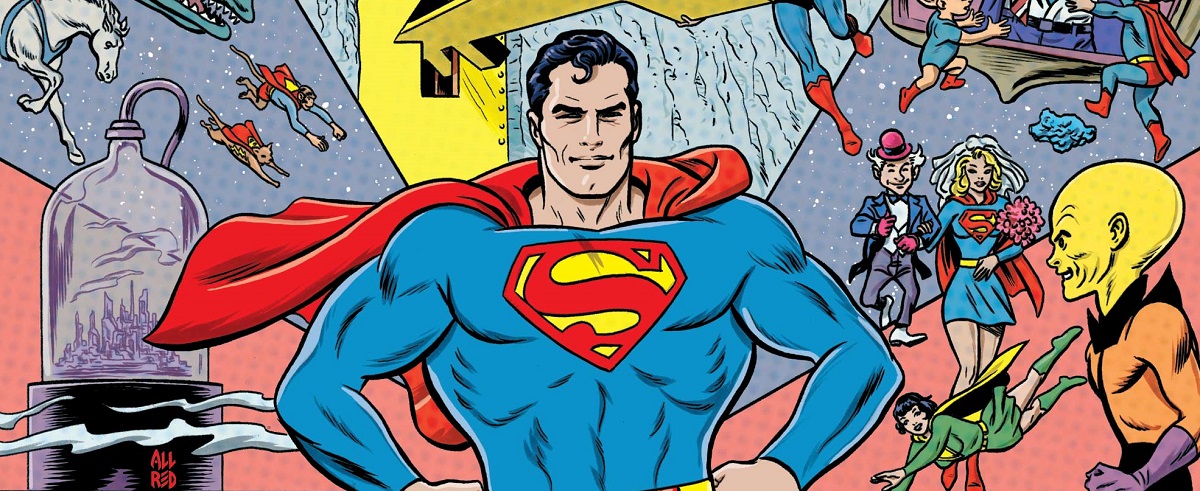
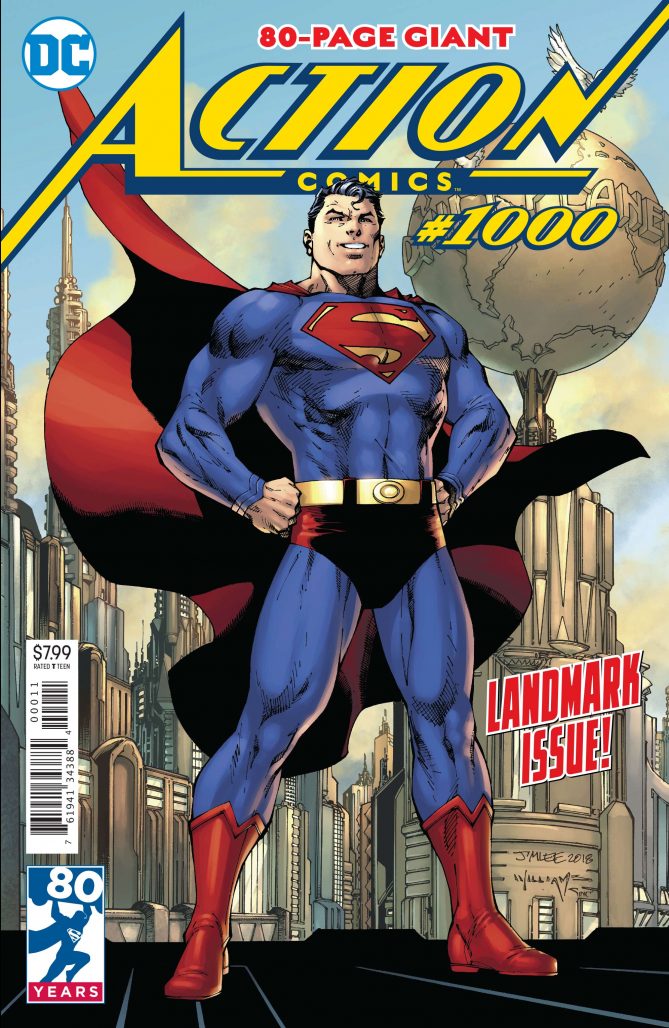
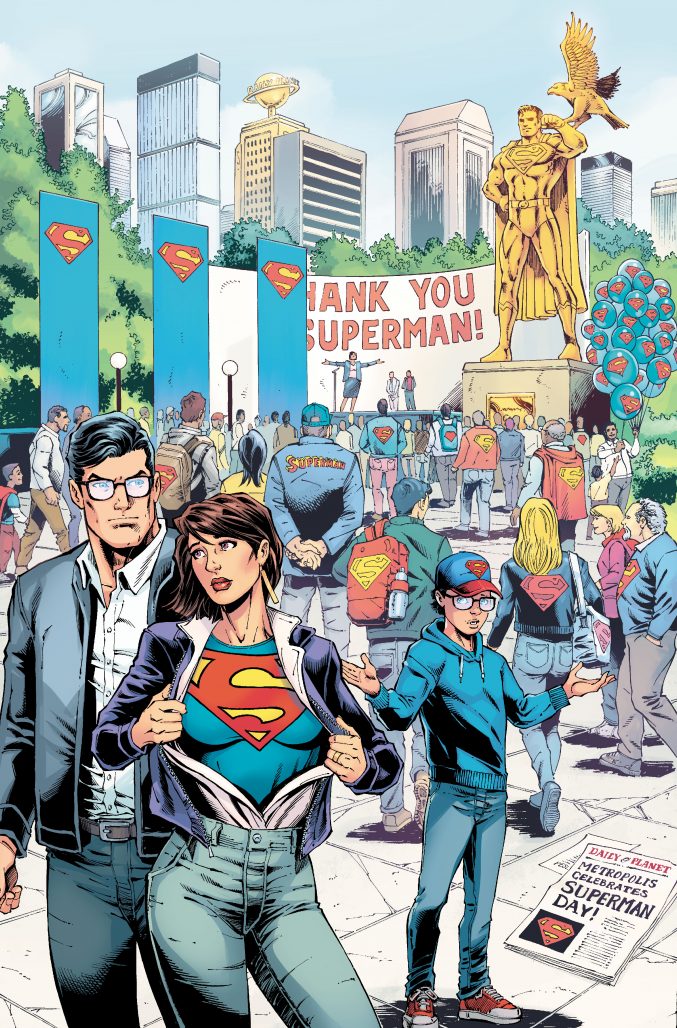
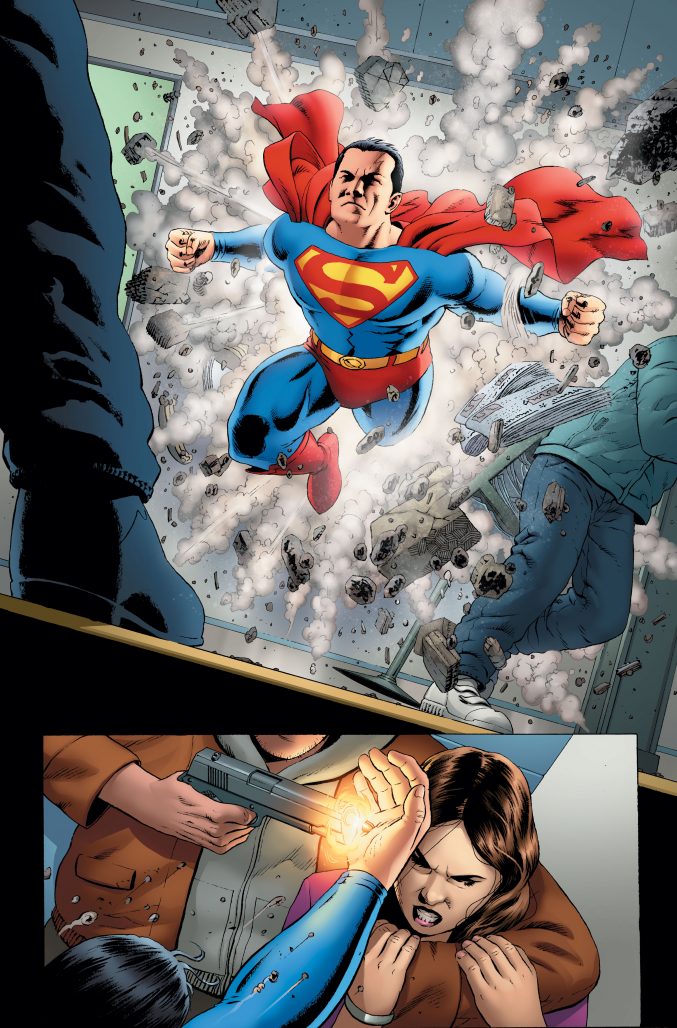
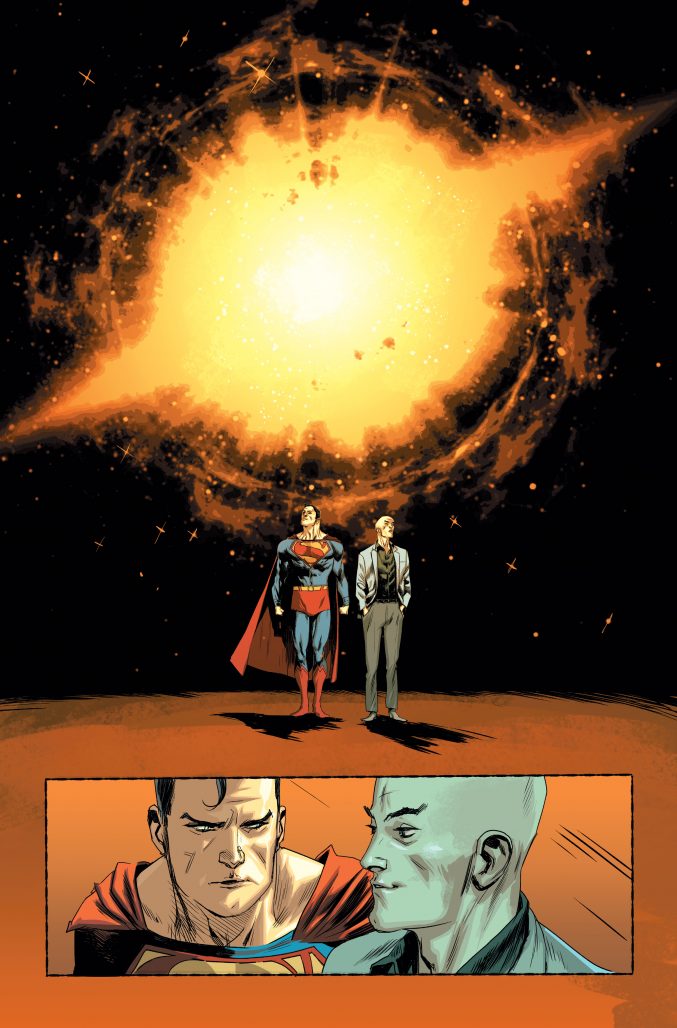
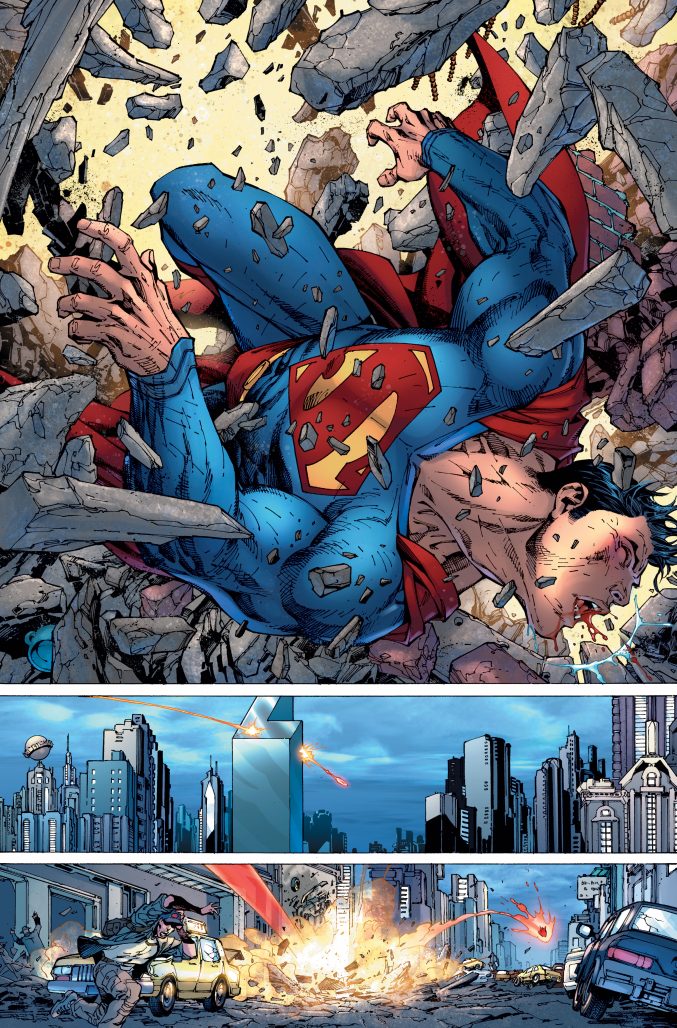
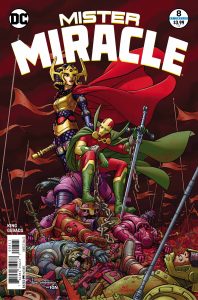









I was lukewarm on a couple of the stories, but “Faster Than A Speeding Bullet” was worth the price of entry alone.
And the Bendis story (which is, for all intents and purposes, a preview) did it’s job: sign me up for ACTION #1001 (and MAN OF STEEL). I’m a big fan of his writing, but I wasn’t sure how well his style would fit with Superman. The dialogue between the restaurant owner and the waitress, and Kal calling out Zaar, make me very optimistic.
The Action Comics #1000 review incorrectly note the Levitz/Adams story that is in the companion hardcover book and not in the actual comic. Alexander failed to mention the Dini/Garcia-Lopez story that is actually in the comic and was a wonderful story.
The Levitz/Adams story “The Game” is totally in Action #1000! Check again– maybe I’m going crazy.
Alexander if you clicked the link to your own website and read Kyle’s review of the hardcover you will see the noted Levitz/Adams story as new to that volume and not in Action Comics #1000.
https://www.comicsbeat.com/action-comics-80-years-of-superman-a-stirring-historical-adventure/
The story that is included in Action #1000 that you didn’t review was Actionland by Paul Dini, Jose Luis Garcia-Lopez, Kevin Nowlan, Trish Mulvihill, and Josh Reed..
So it seems “The Game” was in our digital advances for Action Comics #1000 but not in the physical issue itself– we’ll call that a wash. :) Sorry if I came off as having my head in the sand.
I’m aware I didn’t talk about “Actionland.” There were a couple of others I didn’t mention in my review including King’s & Mann’s story and “Five Minutes”– I didn’t intend for this to 100% comprehensive– was mostly just looking at some personal highlights.
Thanks for reading though!!! Very much appreciate your thoughts.
FYI, “The Game” was in my digital (non-preview, non-advance) copy of Action Comics #1000 as well — and in my HB ACTION COMICS: 80 YEARS OF SUPERMAN, too. Guess DC decided to put the story in both places.
In retrospect, the Levitz-Adams story really should have been in Action #1000 to begin with and that space used for another classic Superman short in the hardcover.
Comments are closed.